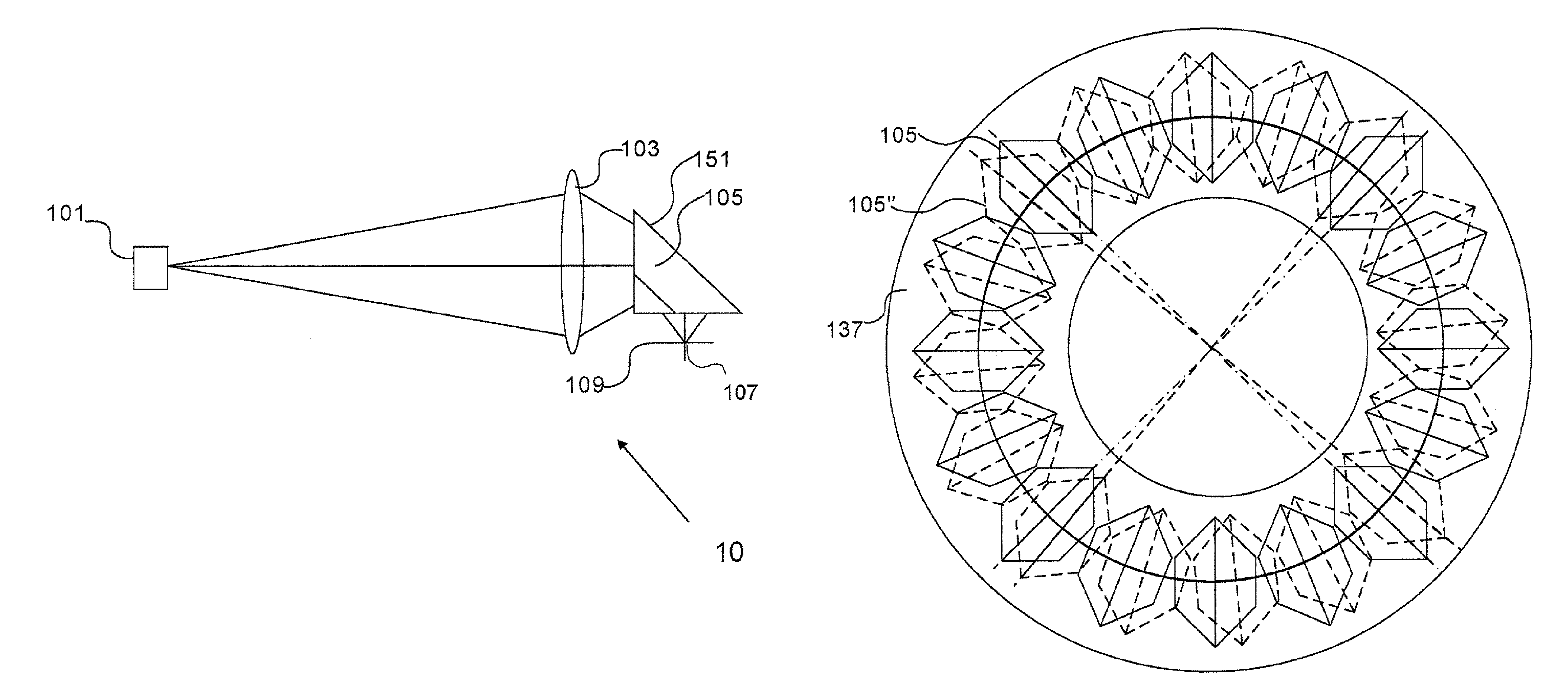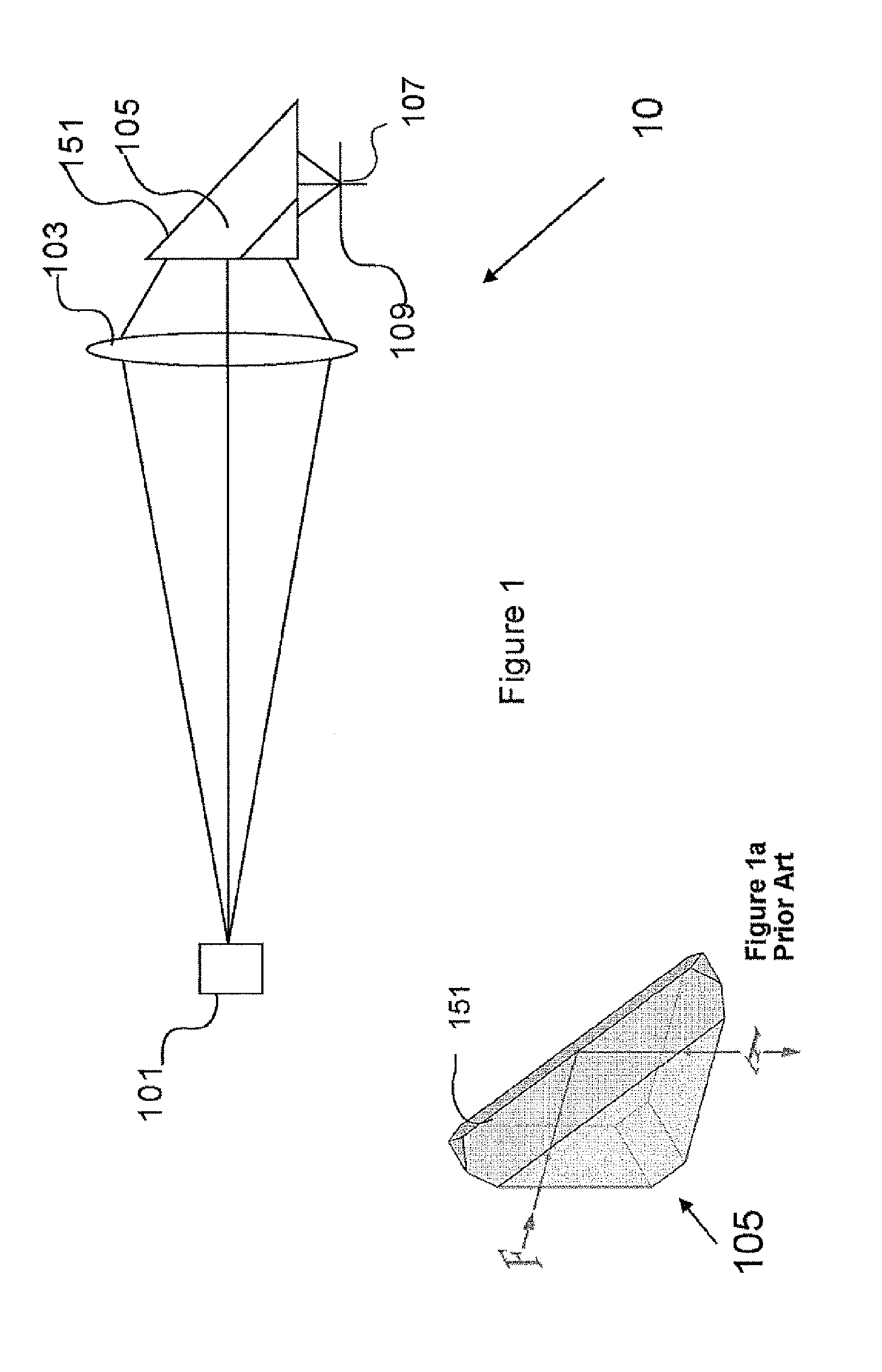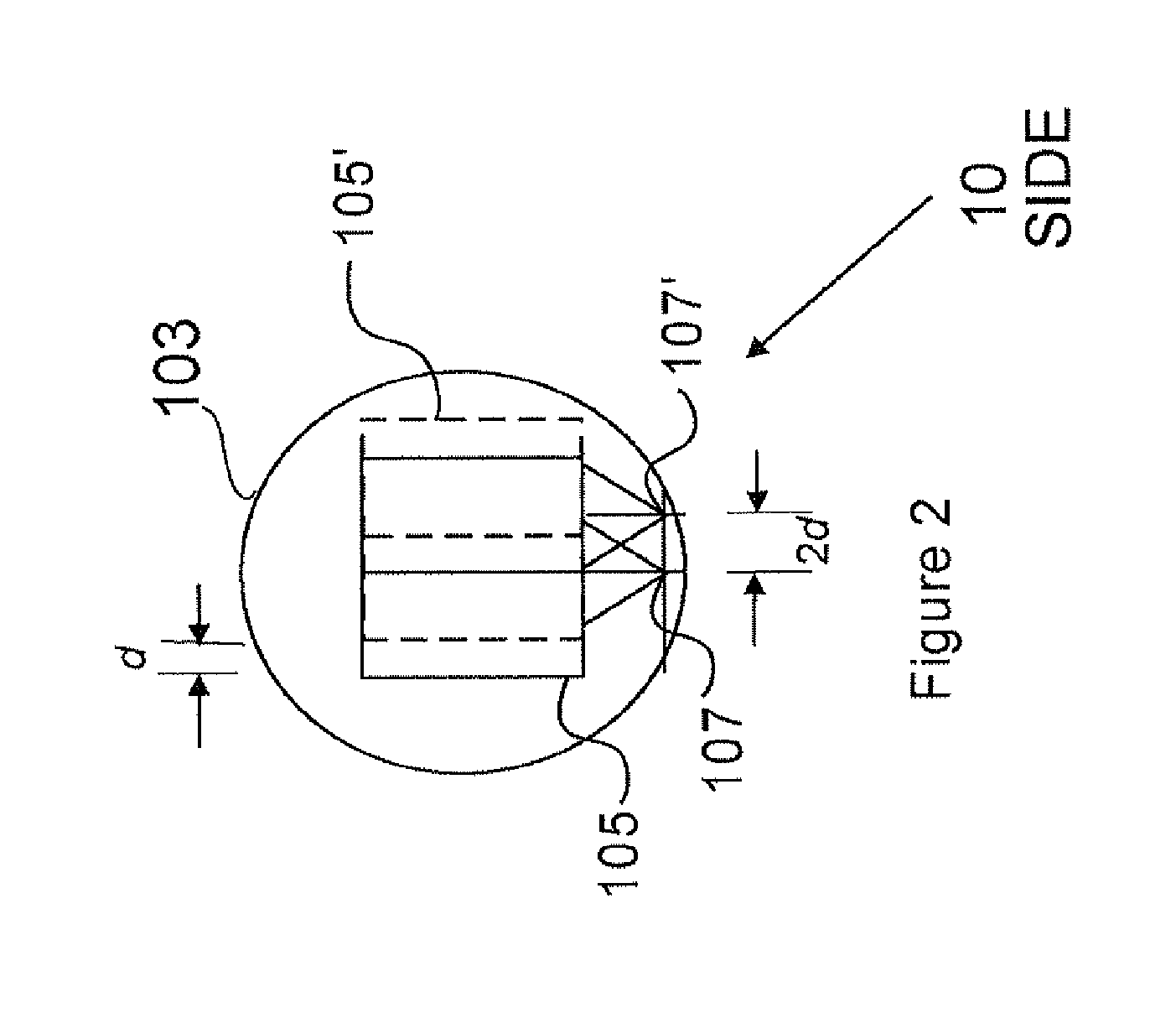Linear optical scanner
a scanning device and optical scanner technology, applied in the field of optical scanning devices, can solve the problems of optical aberration, distortion and field curvature, optical system usually being substantially larger than the diameter of the scanned beam, and different optical aberrations
- Summary
- Abstract
- Description
- Claims
- Application Information
AI Technical Summary
Benefits of technology
Problems solved by technology
Method used
Image
Examples
embodiment 130
[0052]FIG. 10 presents circular arrangement of multiple Amici prisms in position 105, and another position 105″ on a rotating mechanical bearing disk 137 rotating about axis 123 as in embodiment 130. High rotating speed of such a disc with a large number of scanning Amici prisms, allows creating of enormous number of pixels, much more than can be supplied for instant by state of art polygon “mirrors.
[0053]Reference is now made to FIG. 11, which illustrates an additional embodiment of the present invention. Point source 101 emits light rays which are imaged by imaging lens 103, through Amici roof prism 105, as scanning element. As presented in FIG. 11, a rotating scanning optical system is shown with Amici prism 105 rotating about axis 123 similar to embodiment 130. An additional optical relay lens 134, performs re-imaging of intermediate image at 109 into final image 109′. As is mentioned above, trajectory of intermediate image 109 could deviate from a straight line. Optical relay 1...
embodiment 80
[0054]An additional embodiment 80 of the present invention is illustrated in FIG. 12, of three-dimensional scanning in a transparent medium 147. Three lenses 141, 143 and 145 are used for re-imaging light emitted from illuminating source 101 through Amici roof prism 105, as scanning elements. Lens 143 (shown in two position 143 an 143′) is movable along the optical axis, creating a change in depth of focusing plane 149 or z-scan inside the transparent media. The optical system is optimized for compensation of spherical aberration caused by medium 147, at every depth of the focused beam 149 inside the transparent media 147, by pre-calculating of spherical aberration of the optical system at every corresponding axial position of lens 143. Lens 143 axial movement causes change of the focused beam position and scanning in depth is achieved as well as lateral scanning. Spherical aberration of the transparent medium 147 is strongly dependent on the depth of the focusing beam. Entire optic...
PUM
 Login to View More
Login to View More Abstract
Description
Claims
Application Information
 Login to View More
Login to View More - R&D
- Intellectual Property
- Life Sciences
- Materials
- Tech Scout
- Unparalleled Data Quality
- Higher Quality Content
- 60% Fewer Hallucinations
Browse by: Latest US Patents, China's latest patents, Technical Efficacy Thesaurus, Application Domain, Technology Topic, Popular Technical Reports.
© 2025 PatSnap. All rights reserved.Legal|Privacy policy|Modern Slavery Act Transparency Statement|Sitemap|About US| Contact US: help@patsnap.com



